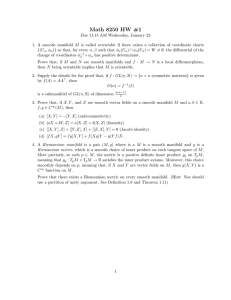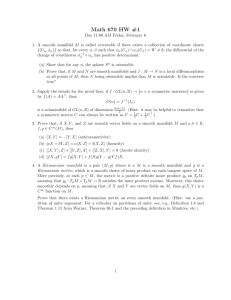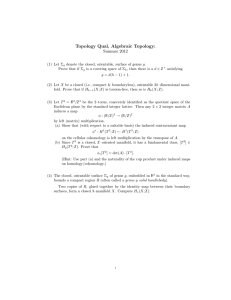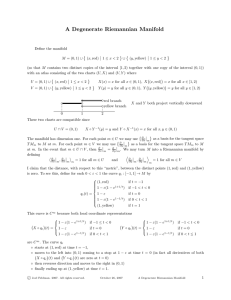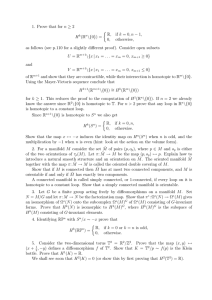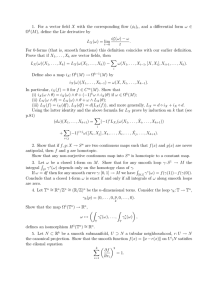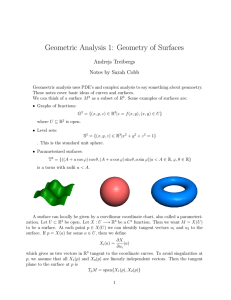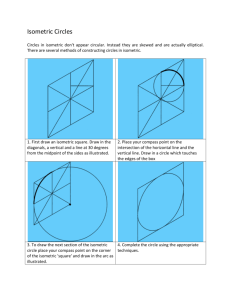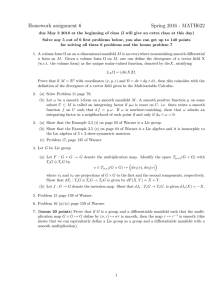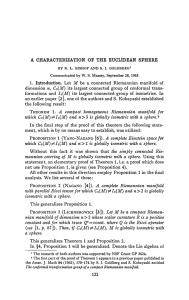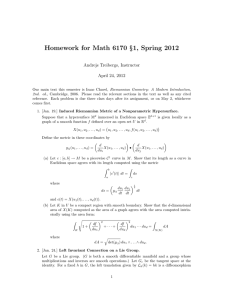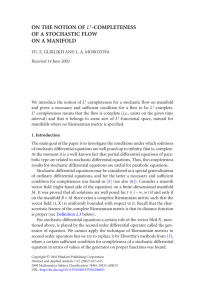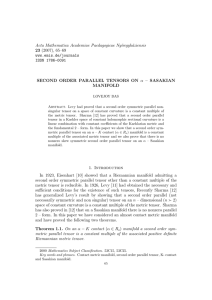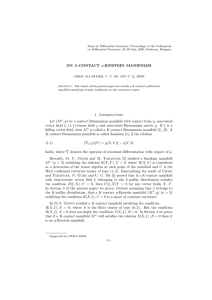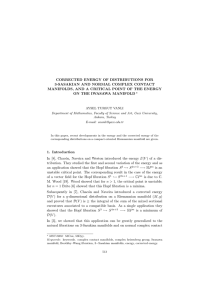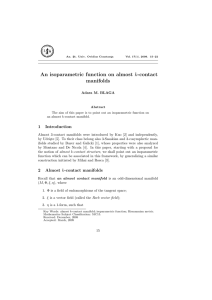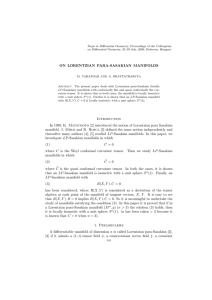Homework 4 ∗
advertisement
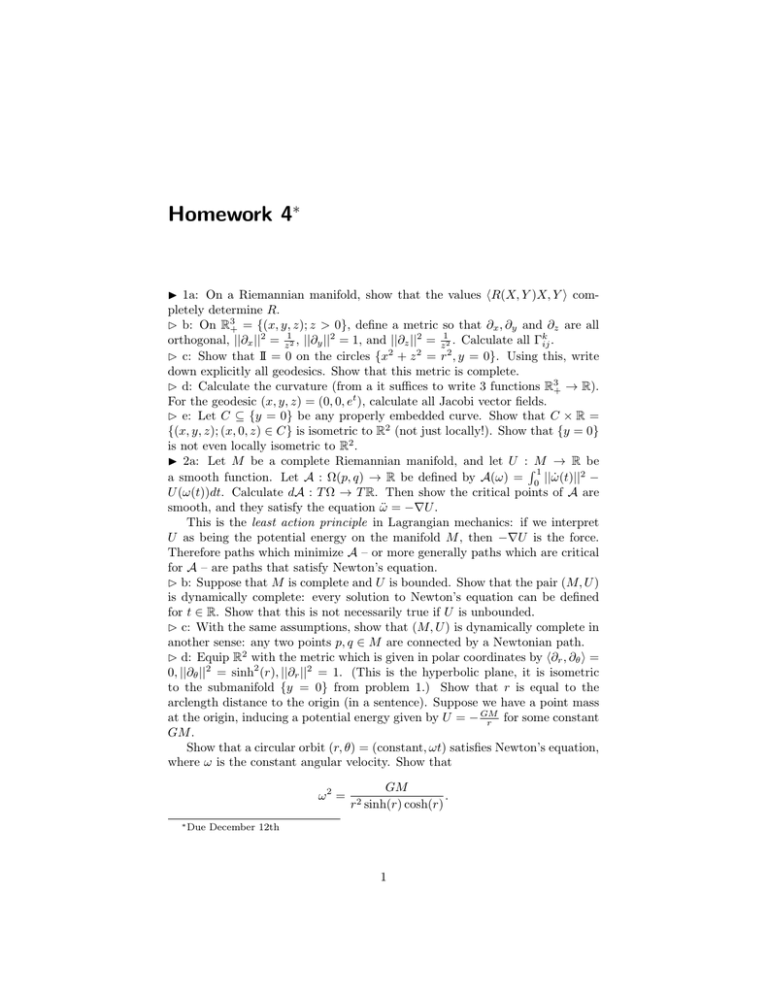
Homework 4∗
I 1a: On a Riemannian manifold, show that the values hR(X, Y )X, Y i completely determine R.
B b: On R3+ = {(x, y, z); z > 0}, define a metric so that ∂x , ∂y and ∂z are all
orthogonal, ||∂x ||2 = z12 , ||∂y ||2 = 1, and ||∂z ||2 = z12 . Calculate all Γkij .
B c: Show that II = 0 on the circles {x2 + z 2 = r2 , y = 0}. Using this, write
down explicitly all geodesics. Show that this metric is complete.
B d: Calculate the curvature (from a it suffices to write 3 functions R3+ → R).
For the geodesic (x, y, z) = (0, 0, et ), calculate all Jacobi vector fields.
B e: Let C ⊆ {y = 0} be any properly embedded curve. Show that C × R =
{(x, y, z); (x, 0, z) ∈ C} is isometric to R2 (not just locally!). Show that {y = 0}
is not even locally isometric to R2 .
I 2a: Let M be a complete Riemannian manifold, and let U :RM → R be
1
a smooth function. Let A : Ω(p, q) → R be defined by A(ω) = 0 ||ω̇(t)||2 −
U (ω(t))dt. Calculate dA : T Ω → T R. Then show the critical points of A are
smooth, and they satisfy the equation ω̈ = −∇U .
This is the least action principle in Lagrangian mechanics: if we interpret
U as being the potential energy on the manifold M , then −∇U is the force.
Therefore paths which minimize A – or more generally paths which are critical
for A – are paths that satisfy Newton’s equation.
B b: Suppose that M is complete and U is bounded. Show that the pair (M, U )
is dynamically complete: every solution to Newton’s equation can be defined
for t ∈ R. Show that this is not necessarily true if U is unbounded.
B c: With the same assumptions, show that (M, U ) is dynamically complete in
another sense: any two points p, q ∈ M are connected by a Newtonian path.
B d: Equip R2 with the metric which is given in polar coordinates by h∂r , ∂θ i =
0, ||∂θ ||2 = sinh2 (r), ||∂r ||2 = 1. (This is the hyperbolic plane, it is isometric
to the submanifold {y = 0} from problem 1.) Show that r is equal to the
arclength distance to the origin (in a sentence). Suppose we have a point mass
at the origin, inducing a potential energy given by U = − GM
r for some constant
GM .
Show that a circular orbit (r, θ) = (constant, ωt) satisfies Newton’s equation,
where ω is the constant angular velocity. Show that
ω2 =
∗ Due
r2
GM
.
sinh(r) cosh(r)
December 12th
1
2
This is in contrast to the Euclidean case, where ω 2 = GM
r 3 (Kepler’s third law,
known to Copernicus in the circular case). Notice that these two equations are
equivalent up to first order at r = 0.
I 3a: Let C1 and C2 be two embedded closed curves in S 3 which are disjoint.
Suppose there are compact oriented surfaces Σ1 , Σ2 ⊆ B 4 so that ∂Σj = S 3 ∩
Σj = Cj , which are transverse to each other, and to S 3 . Define `k(C1 , C2 ) to
be the signed count of intersections Σ1 ∩ Σ2 . Show that this invariant, called
the linking number, only depends on C1 and C2 , not the surfaces.
B b: Let f : S 3 → S 2 be a smooth map, and let p, q ∈ S 2 be regular values.
Show that, if f is homotopic to a constant map, then `k(f −1 (p), f −1 (q)) = 0.
B c: Let S 3 be the unit sphere in C 2 , let S 2 = C ∪ {∞}, and define a map
f : S 3 → S 2 by f (z1 , z2 ) = zz12 . Show that f is not homotopic to a constant.
